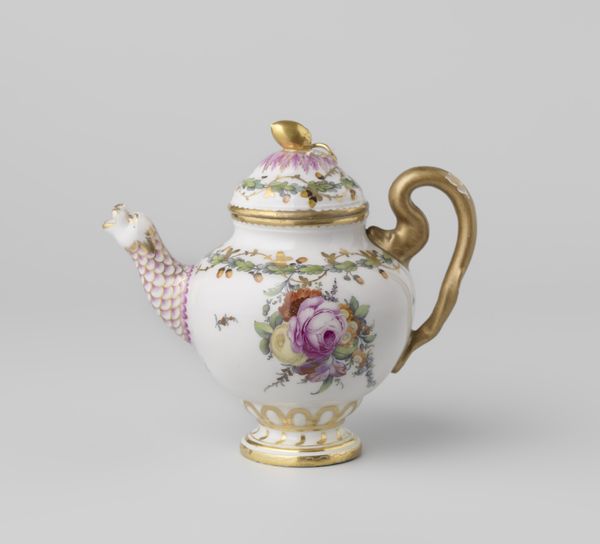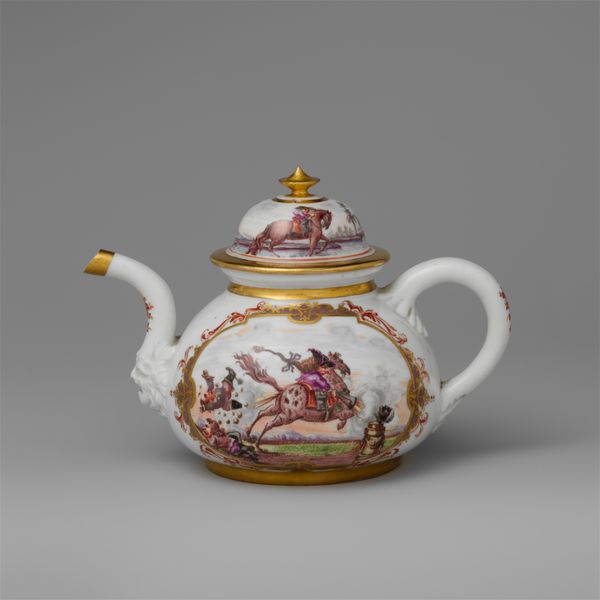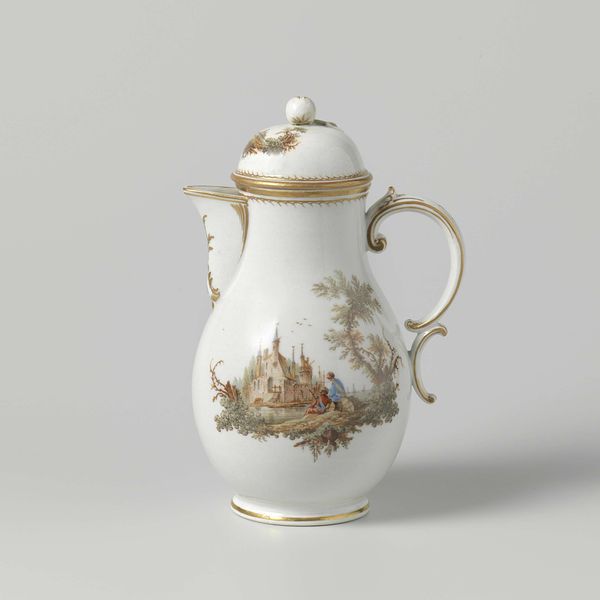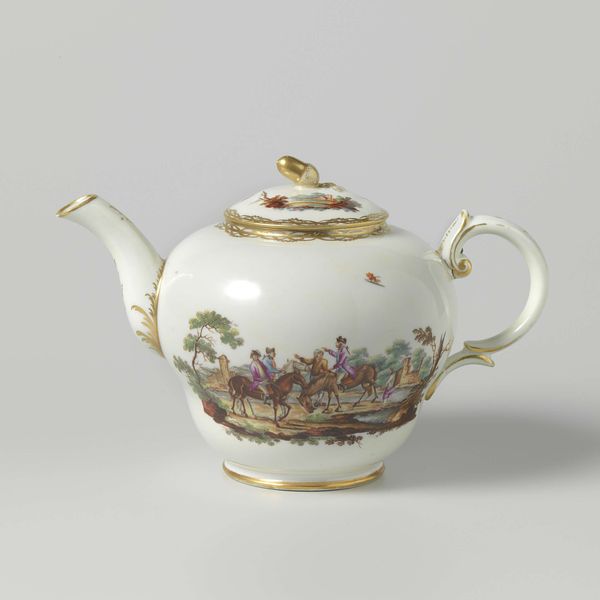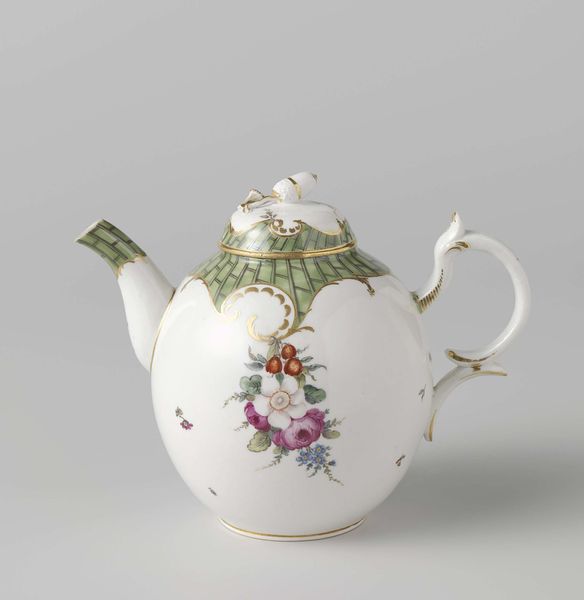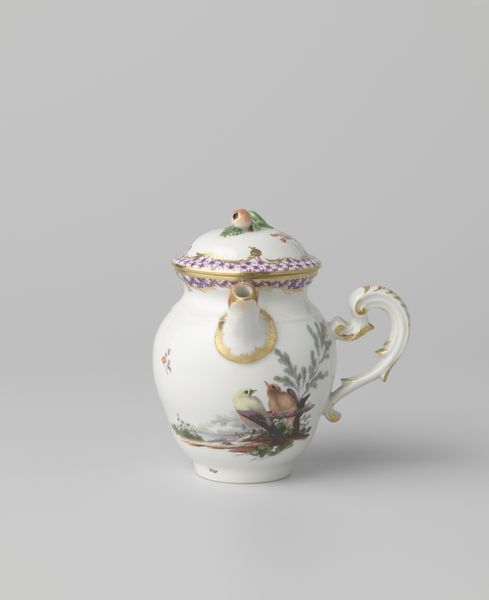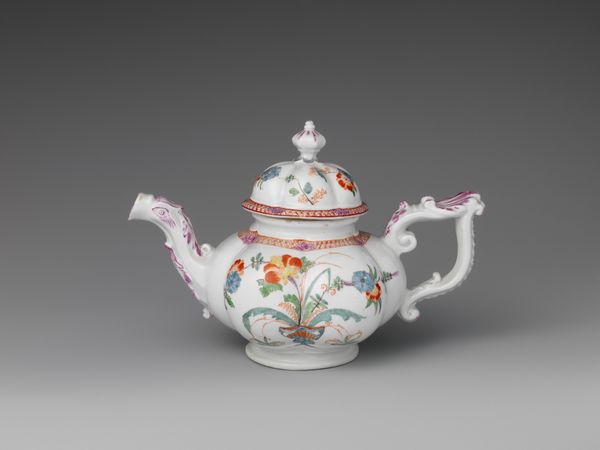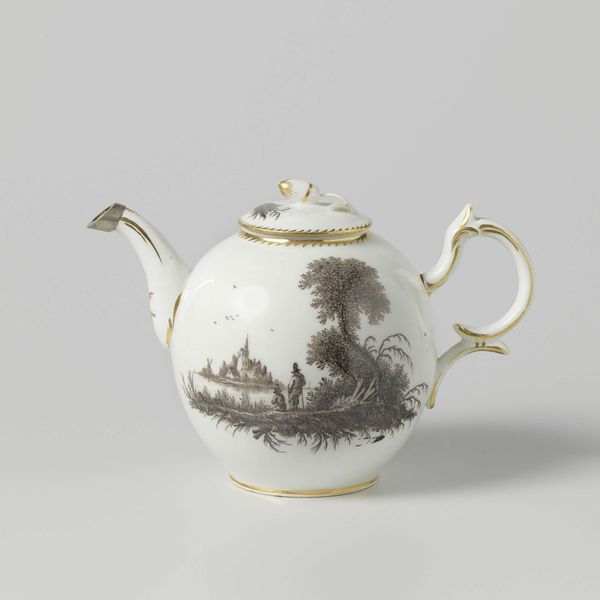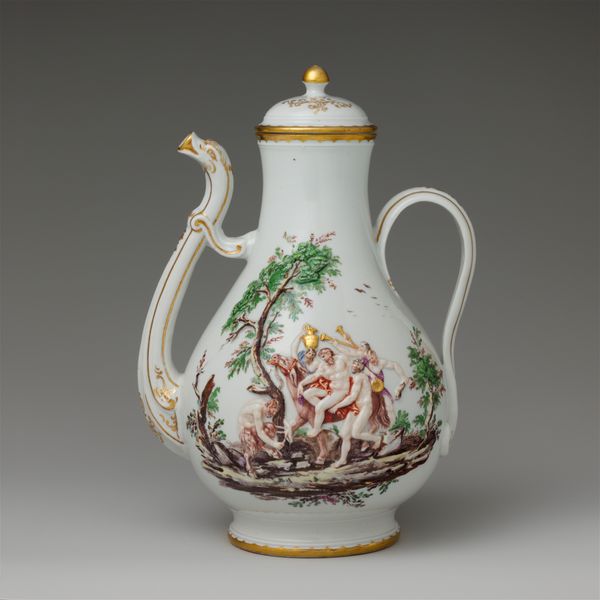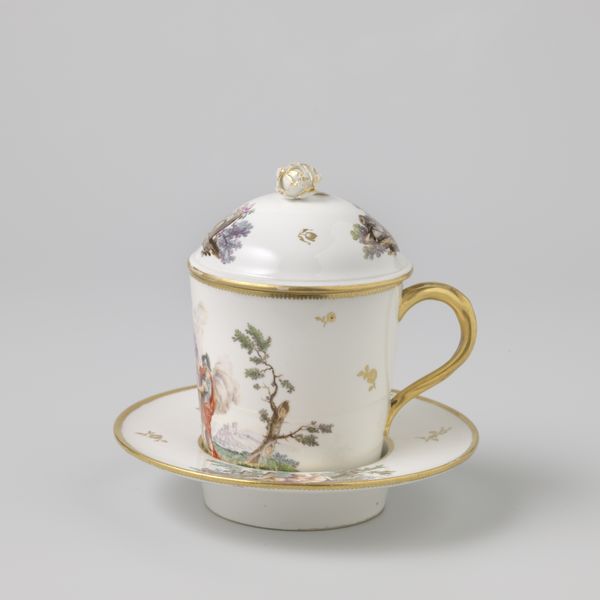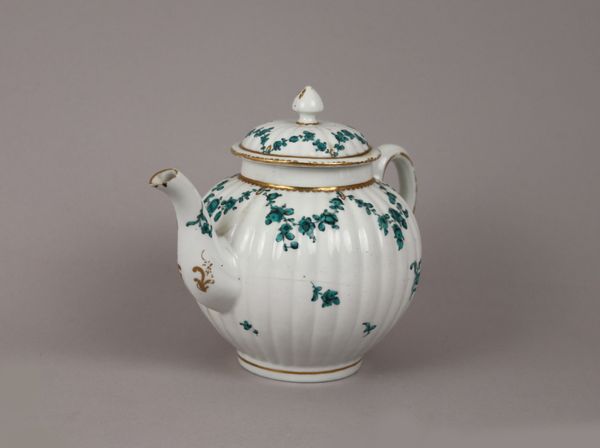
Copyright: Rijks Museum: Open Domain
Here we have a tea service, crafted by Loosdrecht. Objects like this teapot can tell us a lot about 18th-century Dutch society. The painted scenes, the very act of drinking tea, speak volumes about gender roles and social class. Notice the delicate rendering of figures, likely depicting idealized rural life. Tea drinking was initially an aristocratic habit, but it gradually permeated the bourgeoisie. But let's think about the labor. The image evokes leisure and refinement while obscuring the brutal realities of colonial trade. Tea was cultivated and harvested through exploited labor. The porcelain itself was born out of intense competition, often relying on appropriating techniques. While we savor the beauty and craftsmanship, we can’t forget the complex web of power and exploitation that made such objects possible. This tea service allows us to consider these complex narratives, and the emotional dimensions of partaking in rituals steeped in history.
Comments
rijksmuseum about 2 years ago
⋮
Tea services represented a significant part of the production of the Loosdrecht porcelain factory. On display here are a teapot, milk jug and sugar bowl along with other less familiar parts of a tea service, such as a slop bowl, which is used to rinse and warm the cups between two ‘courses’, and a drip catcher (pattipan), which catches the drips from the spout of the teapot.
Join the conversation
Join millions of artists and users on Artera today and experience the ultimate creative platform.
